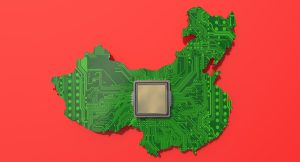China is stepping up its game in the global semiconductor race with the launch of the third phase of its National Integrated Circuit Industry Investment Fund, commonly known as the Big Fund. With a hefty investment of 340 billion yuan ($47.5 billion), this initiative is unfolding amid escalating technological tensions with the United States.
China’s ambitions in the semiconductor sector were first formalized in 2014 with the Big Fund’s initial phase. This phase saw an investment of 139 billion yuan, signaling a departure from mere state support to a more market-driven approach. By attracting funds from state-owned enterprises, financial institutions, and private investors, China aimed to build a robust semiconductor ecosystem. The first phase spread its investments across various sectors, nurturing significant players like Semiconductor Manufacturing International Corporation (SMIC).
The second phase, launched in 2019 with 204 billion yuan, focused on more specialized segments of the supply chain, such as etching machines and testing equipment. This phase was crucial in bolstering China’s self-sufficiency, especially in the face of increasing U.S. sanctions. However, it was not without its pitfalls. Corruption scandals and poor investment choices highlighted the need for stricter oversight, and geopolitical tensions further complicated progress.
Big Fund 3.0: A New Strategy
Enter Big Fund 3.0, designed to tackle past missteps and set a new course with revamped funding sources, investment targets, and strategic priorities. One notable change is the involvement of major banking institutions as key investors. With 19 founders, including the Ministry of Finance and heavy-hitters like the Industrial and Commercial Bank of China, this phase leans on centralized, state-controlled financial backing. This move underscores the high stakes but also ramps up the pressure to deliver results.
Moreover, the duration of Big Fund 3.0 has been extended to 15 years, from May 24, 2024, to May 23, 2039, reflecting the long-term nature and hefty capital requirements of the semiconductor industry.
Big Fund 3.0 embraces a dual approach, targeting both the entire semiconductor supply chain and specific critical areas. On one hand, it aims to foster growth across design, manufacturing, packaging, testing, equipment, and materials. This interconnected development ensures that advancements in one area spark progress in others, creating a robust and self-sufficient semiconductor ecosystem.
On the other hand, it zeroes in on critical bottlenecks that have historically stymied China’s progress. These include the development of large semiconductor manufacturing plants and essential components like high-bandwidth memory (HBM). Additionally, the fund prioritizes advanced chip technologies for artificial intelligence, reflecting AI’s rising importance in the global tech landscape. This targeted focus is crucial for overcoming technological challenges and cutting down dependencies on foreign technologies.
Governance and Oversight: Tightening the Reins
Big Fund 3.0’s governance structure reflects a strategic shift toward centralized oversight. The Central Science and Technology Commission (CSTC), a new Communist Party coordinating body, oversees the initiative, setting policy priorities and delegating execution to entities like the Ministry of Science and Technology. This centralization aims to ensure strategic coordination and effective management.
Responding to past corruption scandals, Big Fund 3.0 is implementing stricter governance measures. The appointment of Zhang Xin, a seasoned semiconductor technocrat, as president, signals a commitment to restoring confidence among investors and stakeholders. Ensuring wise investments and curbing corruption requires ongoing vigilance, robust oversight mechanisms, and a blend of technical expertise and professional fund management skills.
Public-Private Synergy and Funding Reforms
Enhanced public-private cooperation is another cornerstone of Big Fund 3.0. China plans to revamp its national laboratories and innovation centers by integrating scientific research with commercial applications. Collaborating with both private and state-owned companies, the aim is to create synergy between research and real-world applications.
Reforms in funding mechanisms are also on the horizon. Since the establishment of the National Integrated Circuit Fund in 2014, Beijing has promoted its own version of a venture capital model. The model has achieved some preliminary successes. Despite geopolitical challenges, China’s semiconductor industry has made significant strides, now accounting for nearly a quarter of global 300mm chip manufacturing capacity. SMIC, China’s leading chip foundry, has tripled its revenue and doubled its capacity, becoming the world’s third-largest foundry.
But experts generally agree that Big Funds 1.0 and 2.0 fell short of meeting the state’s ambitious technological goals. The new oversight system aims to address these shortcomings and achieve more ambitious objectives.
Global Implications
The significance of Big Fund 3.0 extends beyond technological self-reliance. By strengthening its semiconductor industry, China aims to secure technological leadership, find new growth sectors, create high-tech jobs, and generate healthier returns to address government debt issues. These objectives are especially critical as China faces an impending structural economic slowdown, and Beijing seeks new drivers for economic prosperity to maintain its legitimacy.
Globally, China’s aggressive investment in its semiconductor industry is likely to disrupt market dynamics. Increased production capacity in mature-node chips could lead to oversupply and price pressures, impacting countries like Taiwan, South Korea, Malaysia, and Vietnam. The United States has intensified efforts to coordinate export controls with other nations to limit China’s access to advanced technologies. This ongoing technological conflict will continue to shape global semiconductor policies and alliances.
Given the immense challenges and high stakes, the success of Big Fund 3.0 is far from assured. Its outcomes will have profound implications for the future of the semiconductor industry and global technological power dynamics, and will play a defining role in Xi Jinping’s economic and political legacy.

































